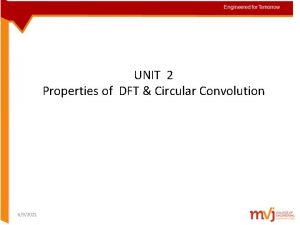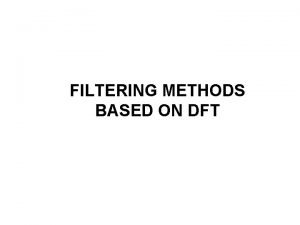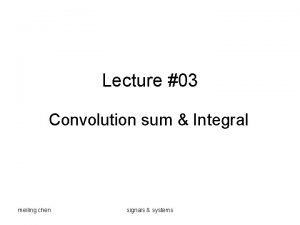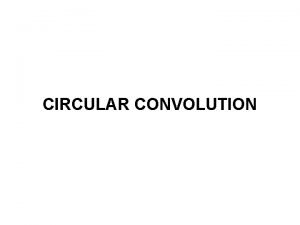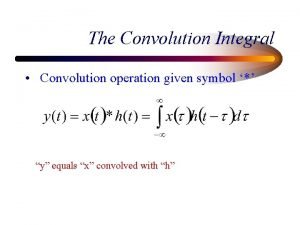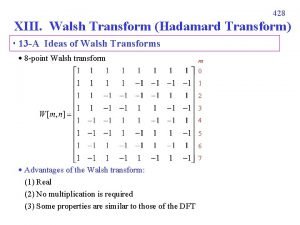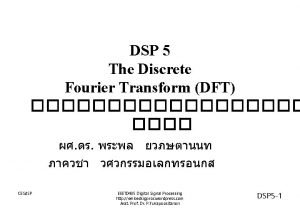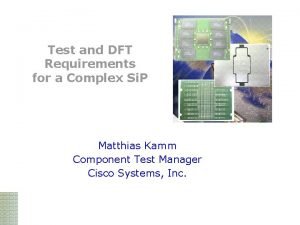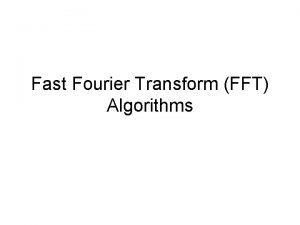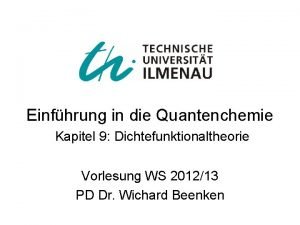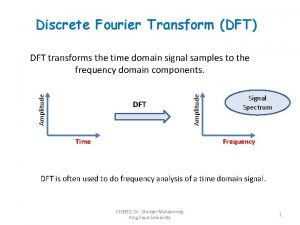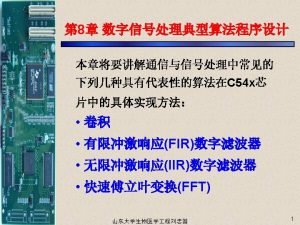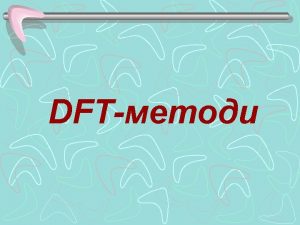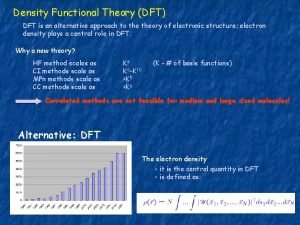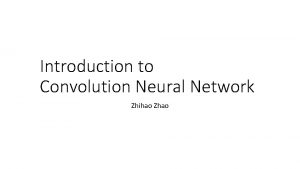CIRCULAR CONVOLUTION Circular Convolution for DFT Timedomain convolution










- Slides: 10

CIRCULAR CONVOLUTION

Circular Convolution (for DFT) Ø Time-domain convolution implies frequency domain multiplication. This property is valid for continuous Fourier transform, Fourier series, and DTFT, but is not exactly true for DFT. Ø The DFT pair considered hereafter (following Openheim’s book, where the 1/N is put on the inverse-transform side): where WN = e j 2 /N is a root of the equation WN=1.

Circular Convolution (for DFT) Ø For DFT, time domain circular convolution implies frequency domain multiplication, and vice versa. Ø Consider a periodic sequence. Its DTFT is both periodic and discrete in frequency. Multiplication in the frequency domain results in a convolution of the two corresponding periodic sequences in the time domain. Now let’s consider a single period of the resulted sequence. Since the two sequences are both periodic, the convolution appears as ‘folding’ the rear of a sequence to the front one by one, and superimposing the inner products so obtained, in a single period.

Convolution of two periodic sequences

Circular convolution (definition) circular convolution ØSymbol for representing circular convolution: or N. If the DFT of x 1[n], x 2[n], and x 3[n] are X 1[k], X 2[k], and X 3[k], respectively. Ø Time domain circular convolution implies frequency domain multiplication: Ø Time domain multiplication implies frequency domain circular convolution (with 1/N amplitude reduction):

Example: circular convolution with a delayed impulse sequence

Example: circular convolution of two rectangular pulses N-point circular convolution of two sequences of length N.

Example: circular convolution of two rectangular pulses (continue) Given two sequences of length L, assume that we add L zeros on its end, making an N=2 L point sequence – referred to as zero padding N-point circular convolution of two sequences of length L, where N=2 L.

N-point circular convolution of two sequences of length L, where N=2 L (continue). Note that by zero padding, we can use circular convolution to compute convolution of two finite length sequences.

Some other properties involving circulation: Ø Time domain circular shift implies frequency domain phase shift: Duality property of DFT: Ø Since DFT and IDFT has very similar form, we have a duality property for DFT: If Then
